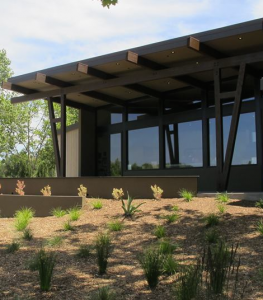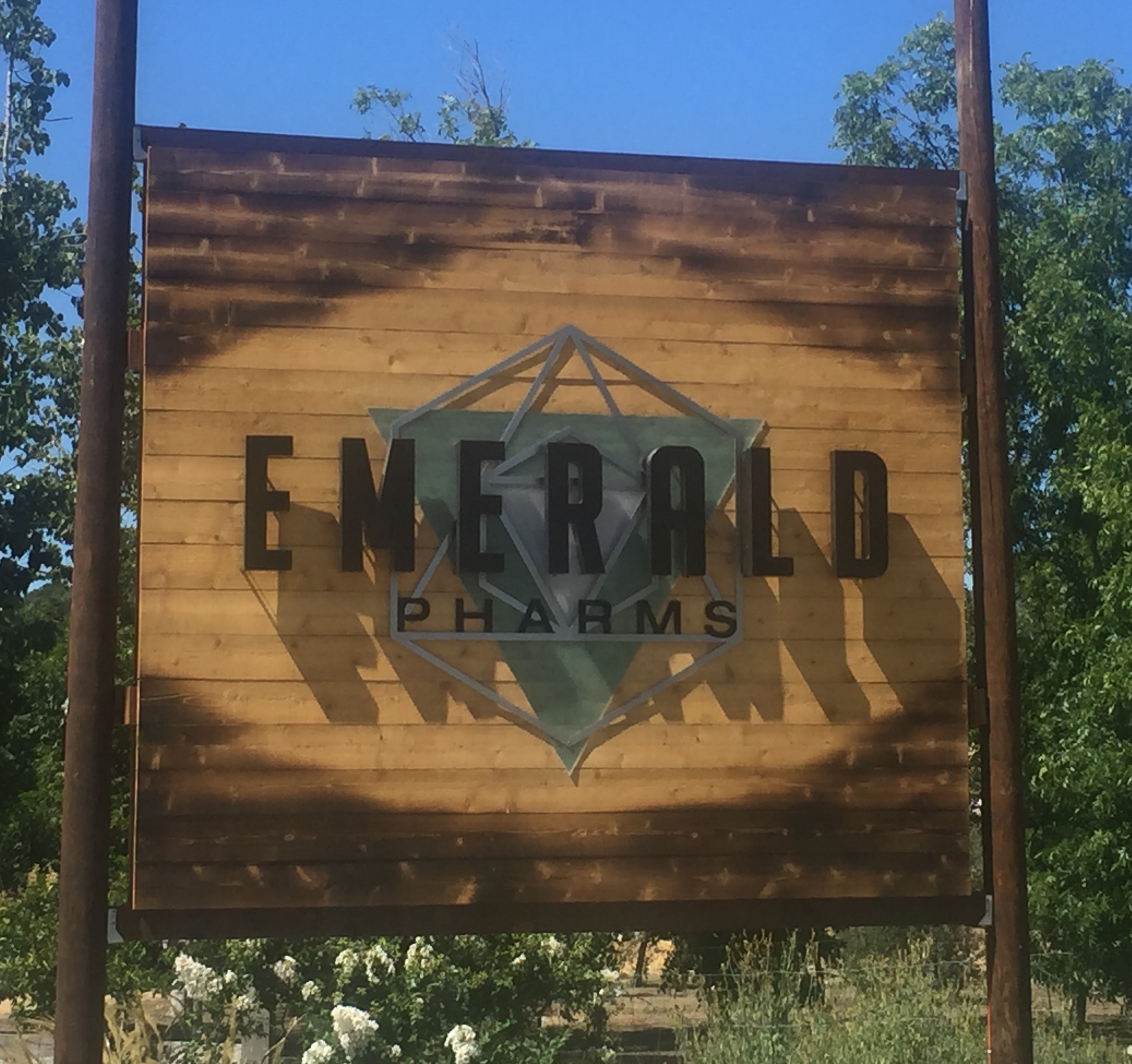 It was high time Your West Coast Oenophile venture outside my frequent stomping grounds and undertake some serious exploration of the joints—I mean, wineries—that I have vetted for Sostevinobile primarily through trade tastings in San Francisco and on Treasure Island. And so I threw caution to the wind and risked upping my per-mile bracket with Metromile and headed north beyond the confines of Sonoma and Napa for the other regions that constitute the vast North Coast AVA: Lake and Mendocino counties.
It was high time Your West Coast Oenophile venture outside my frequent stomping grounds and undertake some serious exploration of the joints—I mean, wineries—that I have vetted for Sostevinobile primarily through trade tastings in San Francisco and on Treasure Island. And so I threw caution to the wind and risked upping my per-mile bracket with Metromile and headed north beyond the confines of Sonoma and Napa for the other regions that constitute the vast North Coast AVA: Lake and Mendocino counties.
After several years’ worth of invites, I finally capitulated and agreed to attend the annual picnic and members meeting for the Redwood Forest Foundation (RFFI) in Ukiah. This foundation represents a laudable effort to preserve not only much of the old growth redwoods throughout California but to protect the wildlife that inhabit these preserves. Naturally, the focus of their efforts aligns synergistically with the sustainable aims of Sostevinobile, but I am not entirely sanguine about the use of cap & trade carbon credits to offset their budget deficit. Global warming has now reached the point where merely maintaining current level of carbon emissions—which, in effect, is what carbon credits facilitates—rather than radically reducing them, is not sufficient to offset the pending catastrophic impact from our profligate industrial consumption.
In spite of such conundrums, Mendocino still can lay valid claim to its self-professed accolade as “The Greenest AVA in America.” Many may claim this is a double-entendre, and yet my only encounter with any semblance of cannabis culture was a sign at the gateway to Hopland. There was no indication, however, that they operated a tasting room.
No dearth of visible tasting rooms existed for the numerous wineries that have sprung up in county since I first visited with Mendocino’s first varietal producer, the late John Parducci. Before locating the Redwood Forest picnic, I fittingly managed to squeeze a visit with Rich Parducci’s McNab Ridge, a winery I had featured a few years ago at a tasting I designed for NAAAP-SF. As eclectic in his tastes as his grandfather, Rich bottles an extraordinary array of organically grown selections that span from a strikingly appealing 2014 French Colombard to his admirable rendition of the 2013 Pinotage. I was quite taken with McNab Ridge’s exemplary 2013 Primitivo, but still managed to spare enough room to sample their 2013 John Parducci Signature Series Port, an opulent blend of Touriga Nacional (55%), Tinta Roriz (16%), Touriga Francesca (10%), Tinta Barroca (10%), and Tinta Cão (9%).
Time constraints dictated that I cut short my visit with McNab Ridge and depart Hopland’s quaint confines for the aforementioned luncheon, aptly situated amid a redwood grove at Nelson Family Vineyards. As these wines are not commonly distributed beyond subscribers and visitors to the tasting room, I took the opportunity to sample through their roster after the RFFI conclave. Starting with their NV Brut, one of Mendocino’s signature expressions, I segued to a delightfully light 2014 Pinot Grigio. Nelson’s deft touch truly manifested itself next in their 2013 Viognier, a well-balanced expression of the grape that proved neither austere nor cloying.
Creative minds most certainly lurked behind their 2015 Barn Blend, a unique blend of Cabernet Sauvignon, Petit Verdot, Zinfandel and Viognier. More traditional, the 2013 Top Row Reserve Cabernet Sauvignon, an intensified wine crafted from a prized block on their estate vineyard. Finally, Nelson revealed its true virtuosity in their exceptional 2013 Zinfandel, a dense, jammy wine that long lingered on the palate.
I next veered southward back to Hopland, where I spent a most enjoyable hour visiting with César Toxqui at the tasting room he maintains alongside Bruotocao’s. His affable 2013 Muscat Canelli prefaced 2014 Rosé of Zinfandel, a wine most definitely not to be confused with the much-maligned White Zin concoction that ruled the 1980s. I found his 2012 Pinot Noir Russian River Valley appealing, his 2010 Grenache decidely more so. Here again, the 2007 Immigrant Zinfandel reigned supreme, closely followed by a 2013 Zinfandel Dry Creek, sourced from across the county line.
César also poured a noteworthy single vineyard Cabernet, his 2013 Cabernet Sauvignon Bloom Vineyards. His trademark, however, stems from his non-vintage blends, the Ruthless Red, a mélange of 80% Zinfandel, 10% Syrah, and 10% Merlot , dedicated to his wife, and the Heirloom Cinco, a solera now in its fifth cuvée, produced from Cabernet Sauvignon, Merlot, Zinfandel, and Viognier.
Following an a raucous evening indulging in all two of downtown Ukiah’s hot spots, I rose early the next day, squeezed in a few laps across the motel pool, and headed out to the foot of Anderson Valley for their annual Barrel Tasting Weekend. Before I reached the festival, I popped into Simaine, an bootstrap winery/tasting room housed in a light industrial complex where my GPS steered me in my quest to locate Germain-Robin. Owner Vic Símon graciously received me just as he prepared to open for the day and opened a selection of his current offerings, starting with his personal favorite, the 2012 Sangiovese. Other wine, designated as Reserve, included the 2010 Petite Sirah and a 2010 Carignane, both of which proved balanced and approachable. His final selection, a Bordeaux blend with the rather elusive name, the 2011 Virisda.
After departing Simaine, the scenic 17-mile expanse of Hwy. 253 wound across the county to Boonville, where I collected my credentials at Philo Ridge’s tasting room. I had hoped to surprise Fred Buonanno with my long-delayed visit but was informed he was still nursing the after-effects of his 60th birthday celebration the night before. Nonetheless, I managed to soldier on and taste through a number of his selections. Having recently sampled several of their Pinot Noir selections at June’s Taste of Mendocino, I opted to taste through an array of white varietals, starting with a lean 2014 Chardonnay Haiku Ranch.Seventeen syllables later, I moved onto the 2014 Pinot Gris Nelson Vineyard, a fresh, tank-fermented rendition of the grape. Also, tank-fermented: the floral yet delicate 2014 Viognier Nelson Ranch, a perfect white for what would prove a scorchingly hot afternoon.
Several Mendocino growers have collaborated over the past several years on a bottling a regional proprietary wine they call Coro. In keeping with this Zinfandel-focused blend, Philo Ridge bottles an intriguing mélange they call Vino di Mendocino. Currently in its fourth release, this wine marries Zinfandel with Syrah, Petite Sirah, and Carignane. The wine was delightful but the burden of becoming a sexagenarian had evidently taken its toll, so I abandoned the notion of waiting for Fred to appear and moseyed onto the next stop.
It was rather surprising to find a town as quaint and remote as Boonville dotted with so many satellite tasting rooms; I would have thought such a laid-back rural setting more conducive to onsite estate visits. Nonetheless, it proved rather convenient to meander between premises and sampling their offerings. Having tried Seebass Family Wines at numerous tastings over the years, I correlated their wines with the impressive Bavarian coat of arms that highlights their label. The tasting room proved to be anything but ponderous, manned by Brigitte Seebass’ daughter Michelle Myrenne Willoughby. Michelle ably navigated five different parties that had bellied up to her bar, yet still found time to attend to my personal discretion. We started with her 2015 Family Chardonnay, a bold wine, like all of Seebass’ selections, sourced from estate-grown, hand-harvested, hand-pruned, sustainably farmed fruit. Quelling my thirst from the 95° F heat, the delightfully chilled 2015 Fantasie proved a compelling Rosé of Grenache.
at numerous tastings over the years, I correlated their wines with the impressive Bavarian coat of arms that highlights their label. The tasting room proved to be anything but ponderous, manned by Brigitte Seebass’ daughter Michelle Myrenne Willoughby. Michelle ably navigated five different parties that had bellied up to her bar, yet still found time to attend to my personal discretion. We started with her 2015 Family Chardonnay, a bold wine, like all of Seebass’ selections, sourced from estate-grown, hand-harvested, hand-pruned, sustainably farmed fruit. Quelling my thirst from the 95° F heat, the delightfully chilled 2015 Fantasie proved a compelling Rosé of Grenache.
Varietal bottlings constitute a distinct strength at Seebass, starting with the 2012 Grand Reserve Merlot and punctuated by the exceptionally well-rounded 2011 Old Vine Zinfandel, honed from 100+ year old vines. Nonetheless, I also greatly enjoyed their 2012 Romantik, a blend of Syrah and Grenache, along with their NV Mysteriös, a proprietary mix from their 2011 & 2012 harvests, combining Grenache, Syrah, Merlot and Zinfandel.
Though certainly a pleasant wine, admittedly the most striking aspect of the Mysteriös was the artistic design of it label, a reproduction of one of Michelle’s late father’s paintings, a geometric design that echoed the prints of op art’s grandfather, renowned Hungarian-French master Victor Vasarely. Coincidentally, I bounced over next to Boonville’s John Hanes Fine Art, a modern gallery that shares space with Harmonique. I would like to think the hermaphroditic statuary that adorned the entrance to this facility dissuaded me from partaking of the various Chardonnays and Pinot Noirs for which Harmonique is prized, but, in truth, Harmonique’s absence from the roster of the Anderson Valley Barrel Tasting precluded my visiting.
And so I ambled across the street to the Boonville Hotel, the onetime home of the legendary New Boonville Hotel, a restaurant that had turned this area into a culinary mecca. In the courtyard, I found Paul and Valerie Gordon of Halcón Vineyards, an intrepid couple who sojourn weekly from their Silicon Valley home to produce Mendocino wine. Their al fresco tasting in the hotel’s garden court included a slew of exemplary wines, starting with their 2013 Prado, a classic Rhône blend of Roussanne and Marsanne. From there, we progressed to the 2014 Rosé, a deft melding of Grenache and Syrah, then segued onto the 2014 Alturas Estate Syrah, classically cofermented with a scintilla of Viognier. Opting for a pure expression of the varietal, Paul poured his 2014 Tierra Petite Sirah, a wine quite reflective of its Yorkville Highlands pedigree. His coup de grâce most certainly, however,was the 2014 Wentzel Vineyard Pinot Noir, an exceptionally well-balanced wine, neither light nor ponderous, a blend with 35% whole cluster that clung to the palate ever so delightfully.
Following this stop, I backpedaled from the center of downtown Boonville to visit with Joe Webb at Foursight. This boutique operation has long stood as one of Mendocino’s premier Pinot Noir labels, but first I had to try the refreshingly chilled 2013 Charles Vineyard Sémillon, a most pleasant, understated wine. Though it may be a noble experiment, I confess that I did not cotton to the 2013 Unoaked Pinot Noir, a simplified expression of the grape that struck me as overly sour. In contrast, Joe’s signature wine, the 2014 Paraboll Pinot Noir presented a geometric leap over the Unoaked, a truly exquisite wine that attested to Anderson Valley’s rightful place in California’s Pinot hierarchy.
Onward, returned to my car and headed north to Elke, the first onsite tasting room on the trail. The dirt road, clapboard barn, unpretentious landscaping embodied just the kind of ramshackle setting I had envisioned before I’d arrived, and while owner Mary Elke was not on hand this afternoon, I still enjoyed a most pleasant session, sipping through a welcomely-chilled NV Sparkling Brut crafted from Chardonnay and Pinot Noir. I found myself equally pleased—and refreshed—by both the 2014 Chardonnay Anderson Valley and a candy-like 2014 Rosé of Pinot Noir Anderson Valley. For balance, I finished with their 2014 Cabernet Sauvignon Lake County, a heterodoxical selection for the afternoon.
Creeping back onto the highway, I next dropped in on Witching Stick, another understated operation that belied the sophistication of its œnology. Owner Van Williamson began my tasting with a straightforward yet excellent 2014 Durrell Vineyard Chardonnay, then moved to the delightful albeit atypical 2014 Carignano Rosato. After these chilled wines, I delighted in an enticing 2012 Valenti Vineyard Syrah before delving into Van’s Pinot lineup. The 2013 Gianoli Vineyard Pinot Noir and the 2013 Perli Vineyard Pinot Noir proved equally compelling, but both were clearly outshone by the lushness of the 2012 Gianoli Vineyard Pinot Noir. But the pinnacle at this stop turned out to be the 2013 Fashauer Vineyard Zinfandel, a deep, complex , jammy wine.
Across the street, Phil T. G. Baxter welcomed me like an old friend to the intimate confines of his eponymous tasting room. As with Witching Stick, the tasting centered on his lineup of Pinot Noir, starting with an acutely focused 2013 Weir Vineyard Pinot Noir. I found both the 2013 Valenti Vineyard Pinot Noir and the 2013 Langley Vineyard Pinot Noir on par with the 2013s from across the street, while the 2012 Oppenlander Vineyard Pinot Noir once again underscored the superior quality of this vintage. Phil concluded our visit with a sample of his 2013 Valenti Vineyard Syrah, a perfectly amiable wine that complement a perfectly amiable setting.
I have often expressed my personal qualms about engaging in Mergers & Acquisitions, my original role in the wine industry and a practice I’ve recently resumed on behalf of Sostevinobile. One of my favorite Mendocino labels has long been Greenwood Ridge, and I had hoped to visit with Allan Green in Philo, but the winery had been acquired back in March by Diane and Ken Wilson and folded into the mini-empire they have quietly cobbled together in Sonoma and Mendocino. Though Allan will be sorely missed, the new regime has nonetheless stayed the course, including the winery’s focus on organic farming and winemaking; the wines I sampled here, however, were produced under the former ownership, so assaying the perpetuation of these practices remains undetermined. Nevertheless, I cottoned immensely to all three wines I tasted, starting with the 2015 Sauvignon Blanc, the first wine to open my eyes to the full potential organic winemaking. Complementing this indubitable bottling, the 2015 Riesling retained just enough sweetness to taste refined, not cloying. Rounding out my visit, the whimsically-labelled 2013 Hundred Point Pinot Noir, named for a promontory along the Mendocino Coast where 100 ships have wrecked, bore fitting testament to Allan’s legacy.
Not quite Helen of Troy (was this the face that launched a thousand ships?), but close. My combined 18 years’ inculcation in Greek & Latin literature begs for allusion as often as I can cite it. As such, I need confess the allure of Lula Cellars stemmed not merely from the beauty of its wines but the striking pulchritude of their delightful hostess. Kacy managed, despite my overt distraction, to steer me through Lula’s lineup with considerable aplomb, commencing her tasting session with an exceptional 2014 Dry Gewürztraminer, a varietal that for many years characterized Mendocino for me. The 2015 Rosato displayed a delight derivation of a Pinot Noir, while the 2013 Anderson Valley Pinot Noir simply resounded. Rounding out this visit, the 2014 Mariah Vineyard Zinfandel provided a rich dénouement to a most productive afternoon.
Only my tasting day was far from over. Resolved to head back to San Francisco along the leisurely coastal route, I continued up toward along Route 128 toward the town of Albion, below which it interests with Highway 1. To my great surprise, nearly all the wineries along this road remained open until 7pm, a far cry from Napa and Sonoma, where 4:30pm seems the general rule of thumb. And so I abruptly veered into the parking lot for Domaine Anderson, the new branch of Roederer Estate dedicated to still wines. I had first encountered these wines at San Francisco’s Pinot Days, where Wine Club Manager Jennie Dallery had apparently drawn the short straw and was relegated to the antechamber at Bespoke, along with a handful of other wineries forced to compete against subway-level acoustics. I had promised her I would visit soon and discuss these wines in an audible setting, but was chagrined to learn she had left the premises a mere five minutes before my arrival. Nonetheless, I made the best of my visit and sampled both the 2014 Estate Chardonnay and the notably lemony 2013 Dach Chardonnay, both complements to the designate Pinot Noirs I had tried in San Francisco, before continuing my trek to an old familiar, Handley Cellars.
I’ve lost count how many times I’ve sampled (and enjoyed) these wines at tastings throughout the year since 2008 and have even attended a luncheon where seven selections of their Pinot Noirs and Chardonnays were paired to each course. So here I was more than happy to taste through their non-standard selections, starting with the exquisitely floral 2014 Pinot Blanc Mendocino County. Complementing this wine, the 2015 Pinot Gris Anderson Valley seemed a bit more subdued but approachable, while the 2015 Riesling Anderson Valley gave considerable credence to Mendocino’s claim as California’s prime AVA for Alsatian varietals.
I bypassed Handley’s all-too-familiar lineup of Pinots for a selection of their other reds, including the unlisted 2013 Vittorio Petite Sirah. I found the 2013 Zinfandel Russian River Valley equally pleasurable, yet both combine, along with a healthy share of Carignane to make a true standout, the 2013 Vittorio Red Table Wine. Meanwhile, standing out on its own merits: the 2013 Syrah Kazmet Vineyard.
Truth be told: I had two primary destinations in mind when I embarked on this journey. Although I finally did manage to determine the actual location for Germain-Robin, I learned that weekend appointments would not have been available anyway. My other Holy Grail, of course, was sparkling wine virtuoso Roederer Estate, which was just about to close its doors as I arrived. I almost convinced the tasting room staff I had won a case of L’Ermitage, but settled for the final tasting of the day as reward for my ruse. Their base offering, the Brut MV, artfully combined a blend of 60% Chardonnay and 40% Pinot Noir. Roederer serves this wine from different size bottles, and clearly the Brut MV Magnum outshone the confines of the standard 750ml bottling. I could not have asked more of the Brut Rosé MV, a Pinot-dominant blend, while their Tête du Cuvée, my cherished 2009 L’Ermitage reaffirmed itself as my perennial favorite sparkling.
 While my return to Mendocino proved both fruitful and enlightening, I confess I was surprised that I never once stumbled across the mood-altering botanical for which it is primarily known. Perhaps because it has been a few decades since I cultivated an affinity for the weed that its whereabouts eluded me. Perhaps it was because I have had little to praise for the few bottlings of marijuana-infused wine that I’ve tried. Or could it be that this reputation is simply an elaborate hoax, a convoluted pharmaceutical paronomasia?
While my return to Mendocino proved both fruitful and enlightening, I confess I was surprised that I never once stumbled across the mood-altering botanical for which it is primarily known. Perhaps because it has been a few decades since I cultivated an affinity for the weed that its whereabouts eluded me. Perhaps it was because I have had little to praise for the few bottlings of marijuana-infused wine that I’ve tried. Or could it be that this reputation is simply an elaborate hoax, a convoluted pharmaceutical paronomasia?
I passed through Mendocino a week later, en route to a wine tasting in neighboring Lake County, another AVA I have been remiss in visiting. But with so many fires having recently ravaged this pristine preserve, it seemed almost obligatory that I journey north as a gesture of solidarity with the fourteen wineries on hand for The People’s Choice Wine Tasting.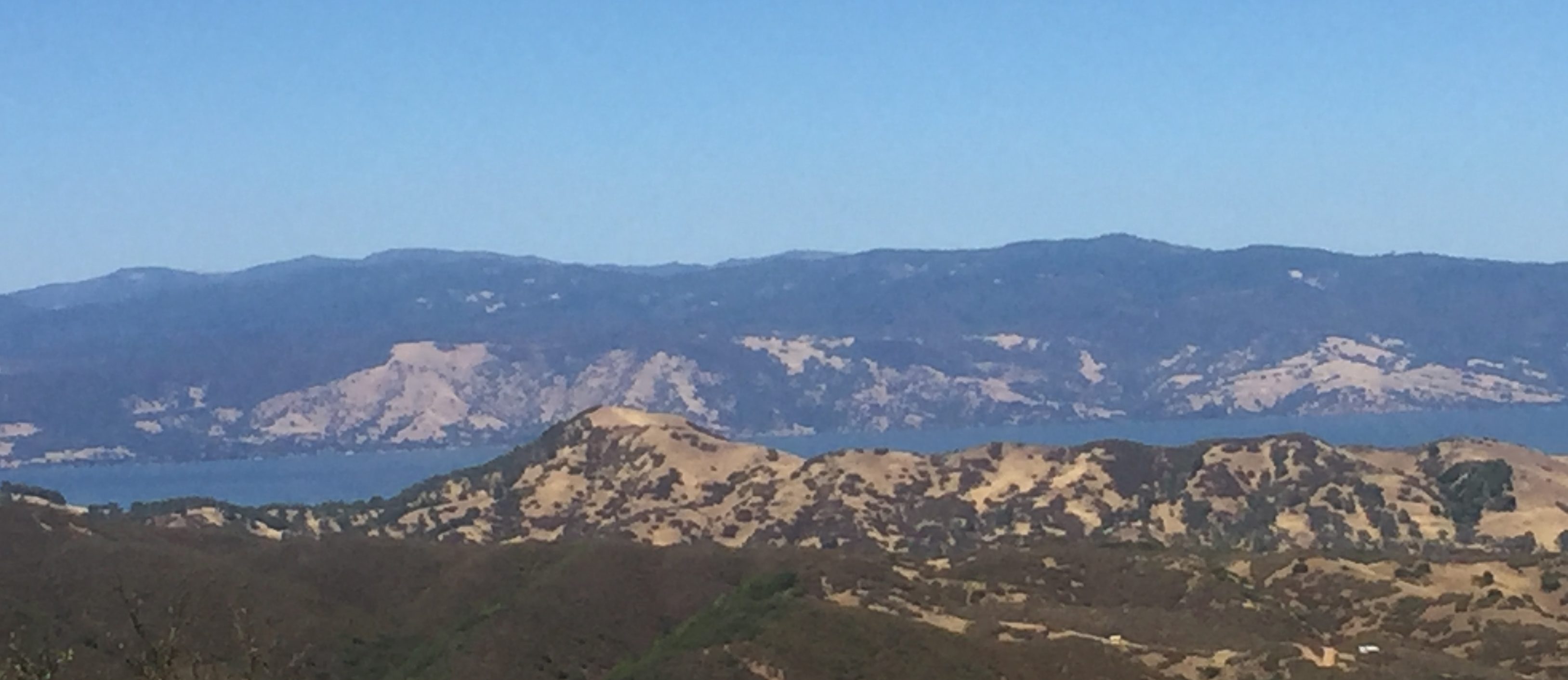 Admittedly, I could have made better timing in getting to the Kelseyville destination, but I decided to follow the scenic mountain route over from Hopland.As I began my descent down Highway 175, the vista from atop Cobb Mountain provided a breathtaking panoramic of Clear Lake, a natural phenomenon often unfairly depicted as a poor man’s Lake Tahoe. The vast expanse of this waterway was an unanticipated revelation, tinged with regret that I have not taken advantage of the resorts that dot its shore, especially when San Francisco summers have taken an Arctic turn.
Admittedly, I could have made better timing in getting to the Kelseyville destination, but I decided to follow the scenic mountain route over from Hopland.As I began my descent down Highway 175, the vista from atop Cobb Mountain provided a breathtaking panoramic of Clear Lake, a natural phenomenon often unfairly depicted as a poor man’s Lake Tahoe. The vast expanse of this waterway was an unanticipated revelation, tinged with regret that I have not taken advantage of the resorts that dot its shore, especially when San Francisco summers have taken an Arctic turn.
My other epiphany came as I wound down from Middleton to the back stretches of Bottle Rock Road: seemingly every other vineyard I passed was tagged with a Beckstoffer sign. Behind this ubiquity lies a concerted effort to bolster the quality and reputation of Lake County’s wines, particularly Cabernet Sauvignon hailing from the Red Hills AVA, where they farm nearly 1,300 acres of vineyard. This past winter, owner Andy Beckstoffer announced a program wherein he would provide one acres’ worth of Cabernet for free to ten select vintners in the county to draw help catalyze this ambitious project. Despite being seen by some merely as theatricality, the chosen vintners with whom I spoke wear their selection as a badge of honor.
I arrived at host Moore Family Winery amid their own theatricality, a blind tasting of thirteen Lake County Sauvignon Blancs. As with the Anderson Valley Barrel Tasting, I quickly drifted from the staged event inside the Tasting Room and focused my visit on the wineries pouring their Gold Medal selections. Host Steve Moore offered a distinctive lineup, starting with his 2015 Sauvignon Blanc, a wine that had not taken part in the shootout. I clearly favored his 2015 Chardonnay, however, but did cotton to the 2009 Late Harvest Sauvignon Blanc, a most deserving dessert wine.
In a similar vein, Kelseyville’s Chacewater showcased their 2014 Chardonnay, a wine I would have liked to contrast with their Organic Certified 2015 Chardonnay. Complementing this vintage, however, was the 2015 Muscat Canelli, a sweet yet appealing wine, to be sure. Former Kendall-Jackson winemaker Jed Steele had his various labels out in force, impressing with the Sweepstake Red Winner, the 2012 Steele-Stymie Merlot and, in a nod to poetic justice,the 2015 Writer’s Block Roussanne.
Forsooth, Fults Family Vineyards, a winery I had not previously encountered, countered with a pair of their amiable whites, the 2015 Sauvignon Blanc and the 2015 Chardonnay. Contrasting quite nicely, the stainless steel 2015 Endeavor, a limited release Chardonnay from Wildhurst, which showcased its 2013 Petite Sirah alongside. And in keeping with the caliber of his worldwide wine portfolio,a standout 2013 Petite Sirah came from Langtry, new NHL team owner Bill Foley’s Lake County acquisition.
While Foley has ponied up $500,000,000 for the construction of T-Mobile Arena in Las Vegas, the more anticlimactic redevelopment of San Francisco’s Treasure Island has begun displacing the cottage wine industry there, starting with the myriad labels produced at The Winery SF. Nonetheless, owner Bryan Kane remains committed to the Lake County fruit he sources for his personal Sol Rouge label, resulting in an ever-reliable 2013 Petite Sirah and a most compelling bottling of his 2012 Cabernet Franc. Another multilabel enterprise, Shannon Ridge showed atypical restraint, pouring a mere four selections from their seemingly inexhaustible lineup. Both the 2013 Wrangler Red, a blend of 44% Zinfandel, 43% Syrah, 11% Petite Sirah, and 2% Cabernet Sauvignon, and the 2012 Single Vineyard Cabernet Sauvignon seemed tepid, particularly when juxtaposed with their 2015 High Elevation Sauvignon Blanc and the superb 2013 High Elevation Chardonnay. Another winery that featured a blend was Fore Family Vineyards, also previously unfamiliar to Sostevinobile, with their delightful Grenache-based 2013 GSM; deftly displaying the potential of the Red Hills volcanic soil, their 2012 Cabernet Sauvignon proved sheer elegant.
From Clearlake Oaks, Cache Creek Vineyards shares only a name with the more familiar casino, but a kindred spirit with its Lake County brethren. Their 2014 Rosé of Cabernet attested to their acuity of their vinification, while the 2012 Cabernet Sauvignon constituted yet another testament to the potential of this AVA. Admittedly, I found myself wondering if Jack Welch would deem that Six Sigma’s somewhat tepid 2014 Sauvignon Blanc held to continuous efforts to achieve stable and predictable process results, but I was especially pleased to taste their 2013 Diamond Mine Cuvée, a black belt mélange of Tempranillo with lesser parts Cabernet Sauvignon and Syrah.
Also veering from the predominant French focus of the afternoon, Nick Buttitta made an impromptu appearance on behalf of his Rosa d’Oro label, sharing his intense 2013 Aglianico, a dense, intense interpretation of this varietal. Still, I concede that the standout wine of the afternoon was the opulent 2014 Viognier from Gregory Graham, one of the most acclaimed winemakers in Lake County.
Andy Beckstoffer contends Lake County’s “Red Hills is the most promising Cabernet Sauvignon site outside of Europe.” At the heart of this AVA sits Tricycle Wine Partners’ Obsidian Ridge, whose wines compare favorably at 2-3 times the price from their southerly neighbors in Napa. Underscoring this point today, they wowed the crowd with considerable aplomb, pouring a robust 2013 Estate Syrah, their 2013 Cabernet Sauvignon, co-winner of the Sweepstake Red award, and a distinctive Meritage, the 2012 Half Mile Proprietary Red, a wondrous blend of Cabernet Sauvignon and Petit Verdot.
I wish I had allotted more time to this visit, as many intriguing Lake County ventures that participated in this competition could not be present. I find myself now filled with trepidation that I may never have the opportunity to visit with several of these; as most people know, a series of wildfires have struck since my visit, threatening to undermine the emergence of Lake County as a world-class AVA. Fortunately, the arsonist responsible for many of these conflagrations has been apprehended. Moving forward, absent of natural catastrophe, perhaps Lake County can look toward their westerly neighbor for definition of the expression “up in smoke!”
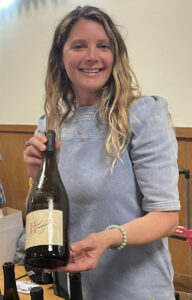
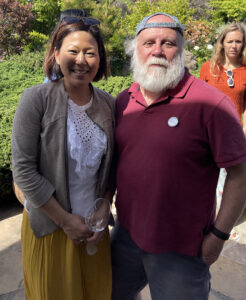 the Silverado Resort & Spa. The release of her 2022 Napa Valley Koshu was cause for an intimate gathering, elegantly catered with original Japanese hors d’oeuvres paired perfectly with the three wines being released: besides the Koshu, her 2020 Sauvignon Blanc was a delicate , appealing wine, while the 2019 Cabernet Sauvignon proved redolent of the myriad accolades this vintage has received.
the Silverado Resort & Spa. The release of her 2022 Napa Valley Koshu was cause for an intimate gathering, elegantly catered with original Japanese hors d’oeuvres paired perfectly with the three wines being released: besides the Koshu, her 2020 Sauvignon Blanc was a delicate , appealing wine, while the 2019 Cabernet Sauvignon proved redolent of the myriad accolades this vintage has received. 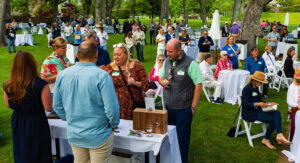 But wine is far more than a commodity or beverage, but as integral to modern civilization as music or literature or art. And in this regard, the Napa Valley Wine Library Collection serves as a preserve for wine’s many cultural artifacts, “an incomparable resource for research, appreciation, andd understanding of wine in all its ramifications.” As such, it was a pleasure to participate in this event and raffle, to help maintain this most important endeavor.
But wine is far more than a commodity or beverage, but as integral to modern civilization as music or literature or art. And in this regard, the Napa Valley Wine Library Collection serves as a preserve for wine’s many cultural artifacts, “an incomparable resource for research, appreciation, andd understanding of wine in all its ramifications.” As such, it was a pleasure to participate in this event and raffle, to help maintain this most important endeavor.  meet and try, then filled in as many others as I could. Striking out on her own, Carolyn Martini moved from the sale of her family’s multigenerational venture, Louis M. Martini, to their Chiles Valley vineyard where she built Napa’s secondmost formidable fortress, Castlevale. Aided by another third-generation vintner, winemaker Angelina Mondavi, she showcased her 2019 Chiles Valley Defender, a powerful Cabernet from one of Napa’s less-heralded AVAs.
meet and try, then filled in as many others as I could. Striking out on her own, Carolyn Martini moved from the sale of her family’s multigenerational venture, Louis M. Martini, to their Chiles Valley vineyard where she built Napa’s secondmost formidable fortress, Castlevale. Aided by another third-generation vintner, winemaker Angelina Mondavi, she showcased her 2019 Chiles Valley Defender, a powerful Cabernet from one of Napa’s less-heralded AVAs. 
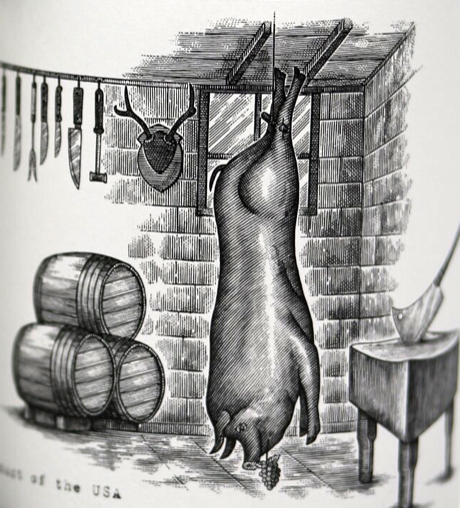
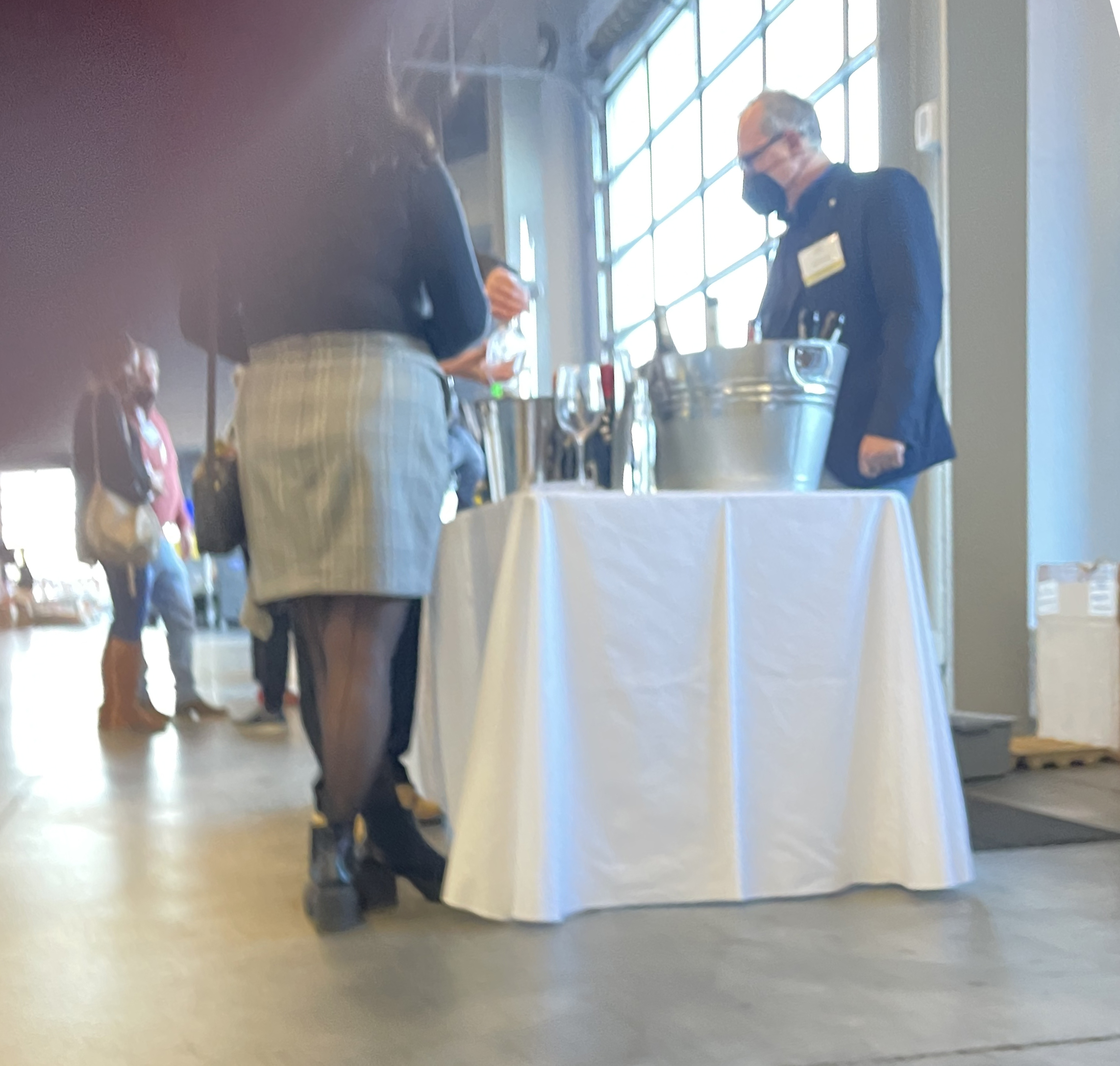 I was quite surprised that The Slow Wine Tour held to its January schedule.
I was quite surprised that The Slow Wine Tour held to its January schedule.  Former
Former  Saint-Emilion lies to the south of Pomerol and is distinguished by wines that blend Merlot and Cabernet Franc. Principal protagonists here include
Saint-Emilion lies to the south of Pomerol and is distinguished by wines that blend Merlot and Cabernet Franc. Principal protagonists here include  This is not to say that I didn’t thoroughly enjoy Carlo Niboli’s second staging of
This is not to say that I didn’t thoroughly enjoy Carlo Niboli’s second staging of 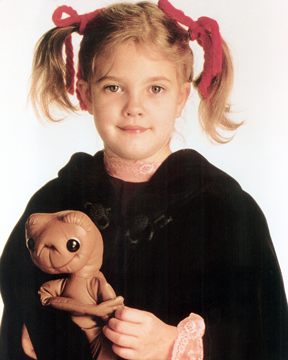 wines after her less-than-stellar vintages originating from Italy at the beginning of this decade. Now calling Monterey home, these wines included her 2017 Rosé Of Pinot Noir alongside Carmel Ridge’s 2015 East Bend Chardonnay and their 2014 First Row Pinot Noir. Another collaboration,
wines after her less-than-stellar vintages originating from Italy at the beginning of this decade. Now calling Monterey home, these wines included her 2017 Rosé Of Pinot Noir alongside Carmel Ridge’s 2015 East Bend Chardonnay and their 2014 First Row Pinot Noir. Another collaboration, 



